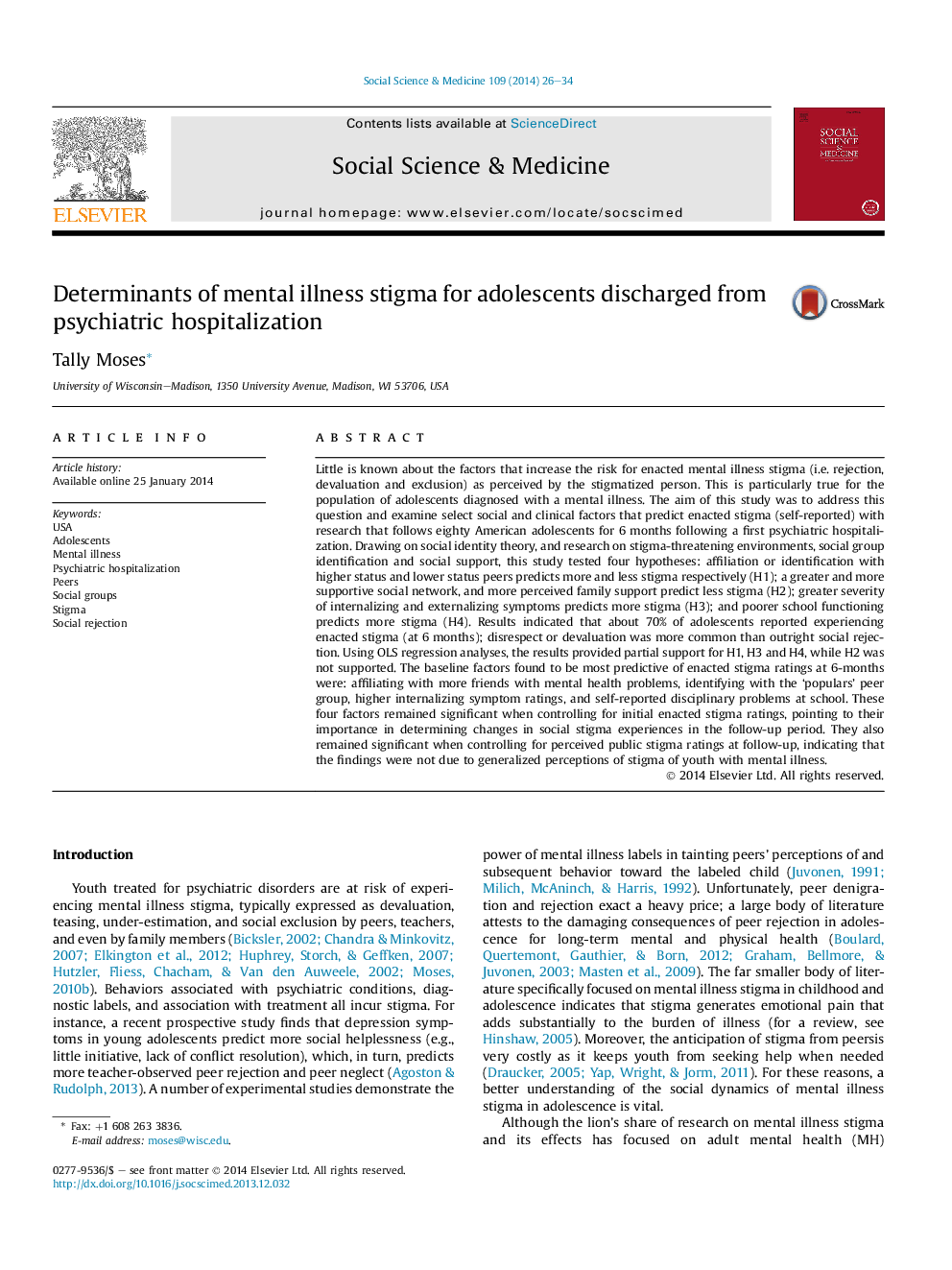| کد مقاله | کد نشریه | سال انتشار | مقاله انگلیسی | نسخه تمام متن |
|---|---|---|---|---|
| 7335116 | 1476059 | 2014 | 9 صفحه PDF | دانلود رایگان |
عنوان انگلیسی مقاله ISI
Determinants of mental illness stigma for adolescents discharged from psychiatric hospitalization
ترجمه فارسی عنوان
عوامل موثر بر نشانه های بیماری روانی نوجوانان از بیمارستان بستری روان
دانلود مقاله + سفارش ترجمه
دانلود مقاله ISI انگلیسی
رایگان برای ایرانیان
کلمات کلیدی
ایالات متحده آمریکا، نوجوانان، بیماری روانی، بستری روانپزشکی، همسالان، گروه های اجتماعی، استقامت، رد کردن اجتماعی،
موضوعات مرتبط
علوم پزشکی و سلامت
پزشکی و دندانپزشکی
سیاست های بهداشت و سلامت عمومی
چکیده انگلیسی
Little is known about the factors that increase the risk for enacted mental illness stigma (i.e. rejection, devaluation and exclusion) as perceived by the stigmatized person. This is particularly true for the population of adolescents diagnosed with a mental illness. The aim of this study was to address this question and examine select social and clinical factors that predict enacted stigma (self-reported) with research that follows eighty American adolescents for 6 months following a first psychiatric hospitalization. Drawing on social identity theory, and research on stigma-threatening environments, social group identification and social support, this study tested four hypotheses: affiliation or identification with higher status and lower status peers predicts more and less stigma respectively (H1); a greater and more supportive social network, and more perceived family support predict less stigma (H2); greater severity of internalizing and externalizing symptoms predicts more stigma (H3); and poorer school functioning predicts more stigma (H4). Results indicated that about 70% of adolescents reported experiencing enacted stigma (at 6 months); disrespect or devaluation was more common than outright social rejection. Using OLS regression analyses, the results provided partial support for H1, H3 and H4, while H2 was not supported. The baseline factors found to be most predictive of enacted stigma ratings at 6-months were: affiliating with more friends with mental health problems, identifying with the 'populars' peer group, higher internalizing symptom ratings, and self-reported disciplinary problems at school. These four factors remained significant when controlling for initial enacted stigma ratings, pointing to their importance in determining changes in social stigma experiences in the follow-up period. They also remained significant when controlling for perceived public stigma ratings at follow-up, indicating that the findings were not due to generalized perceptions of stigma of youth with mental illness.
ناشر
Database: Elsevier - ScienceDirect (ساینس دایرکت)
Journal: Social Science & Medicine - Volume 109, May 2014, Pages 26-34
Journal: Social Science & Medicine - Volume 109, May 2014, Pages 26-34
نویسندگان
Tally Moses,
